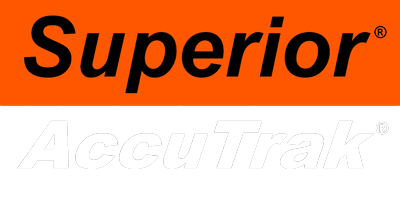The Sound of Savings
Integrating Ultrasonic Inspection into Your Preventative Maintenance Program
Preventative maintenance is the backbone of any successful industrial operation. Regular upkeep and monitoring of equipment not only ensures consistent performance but also helps to avoid costly downtime and repairs. In the pursuit of enhancing preventative maintenance strategies, one technology stands out as a game-changer: ultrasonic inspection & leak detection. Often referred to as the "ears of maintenance," ultrasonic inspection offers a non-invasive, highly effective approach to identifying leaks, inefficiencies, and potential failures in machinery and systems. In this article, we delve into the reasons why ultrasonic inspection & leak detection should be an integral part of your preventative maintenance program.
The Power of Ultrasound
Ultrasonic leak detection harnesses the power of sound beyond the limits of human hearing by detecting high-frequency sound waves produced by vibrations and friction within machinery, and converting them into sounds the technician can easily hear. This empowers ultrasonic inspectors to gain unique insights into the condition of equipment. Ultrasonic frequencies are also generated by pressurized gas leaks which can be detected and pinpointed with an ultrasonic leak detector. These capabilities enable maintenance professionals to identify problems before they escalate, prevent unnecessary downtime, reduce costs, and improve efficiency.
Benefits of Utilizing Ultrasonic Inspection & Leak Detection
- Cost Savings: Undetected leaks can result in significant financial losses due to wasted energy, material, and potential damage to equipment. By swiftly identifying leaks, ultrasonic leak detection helps reduce energy consumption, minimize waste, and reduce costs.
- Reduced Downtime: Unplanned downtime can be a nightmare for any operation, leading to production delays and missed deadlines. Ultrasonic inspection helps prevent unexpected failures by identifying issues at an early stage, allowing for planned maintenance and minimizing disruptions.
- Improved Energy Efficiency: Leaks, especially in compressed air systems, can lead to excessive energy consumption. Integrating ultrasonic leak detection into your maintenance program helps optimize energy usage, leading to reduced operational costs and a smaller carbon footprint.
- Extended Equipment Life: Friction, lubrication deficiencies, and incorrect tolerances can shorten the lifespan of equipment. Equipment issues can usually be detected earlier in their development with ultrasound than with any other technique. By detecting and addressing issues promptly, ultrasonic inspection contributes to extending the life of critical assets.
- Enhanced Product Quality: Leaks, equipment failure and unexpected downtime can all impact product quality and consistency. By reducing these occurrences, manufacturers can maintain the desired product specifications, deliver products on time, and ensure customer satisfaction.
- Quick and Non-Invasive Inspection: Traditional inspection methods often require equipment shutdown and disassembly, leading to downtime and increased labor costs. Ultrasonic inspection offers a non-invasive, rapid inspection process that can be performed while machinery is operational, minimizing disruption.
- Predictive Maintenance: Ultrasonic inspection not only identifies existing problems but can also help predict potential failures by monitoring changes in ultrasonic frequencies over time. This predictive capability allows maintenance teams to address emerging issues before they escalate.
Implementing Ultrasonic Inspection & Leak Detection
To fully reap the benefits of ultrasonic leak detection, organizations should follow a structured approach:
- Start with the Right Equipment: Reach out to a reputable instrument manufacturer and seek guidance on selecting the right equipment for your application.
- Education and Training: Equip your maintenance team with the knowledge and skills required to effectively use ultrasonic detection equipment. Ultrasonic instruments generally require minimal training however it is essential that your team understands the fundamentals of the technology to fully benefit from it.
- Regular Inspections: Incorporate ultrasonic inspection as a routine part of your preventative maintenance schedule. Regular inspections help identify and address problems before they become more significant.
- Data Analysis: Leverage the data collected from ultrasonic inspections to identify trends and patterns. Analyzing this information can help fine-tune maintenance strategies and optimize equipment performance.
- Collaboration: Encourage collaboration between maintenance teams and other departments. Sharing insights gained from ultrasonic leak detection can lead to holistic improvements in operational efficiency.
Ultrasonic inspection is a powerful tool that can revolutionize your preventative maintenance program. By locating costly leaks and offering early insights into potential equipment failures, this technology reduces costs and extends the life of critical assets. Integrating ultrasonic inspection into your maintenance strategy isn't just an option; it's a strategic imperative for any organization aiming to achieve operational excellence and stay ahead of the competition in today's dynamic industrial landscape. Embrace the sound of savings and make ultrasonic inspection & leak detection an integral part of your preventative maintenance program.
This article is provided by Superior AccuTrak® – Industry leading manufacturer of ultrasonic leak detectors & inspection systems. All Superior AccuTrak® ultrasonic instruments are proudly made in the USA.
Visit us today at: www.superiorsignal.com/superior-accutrak

